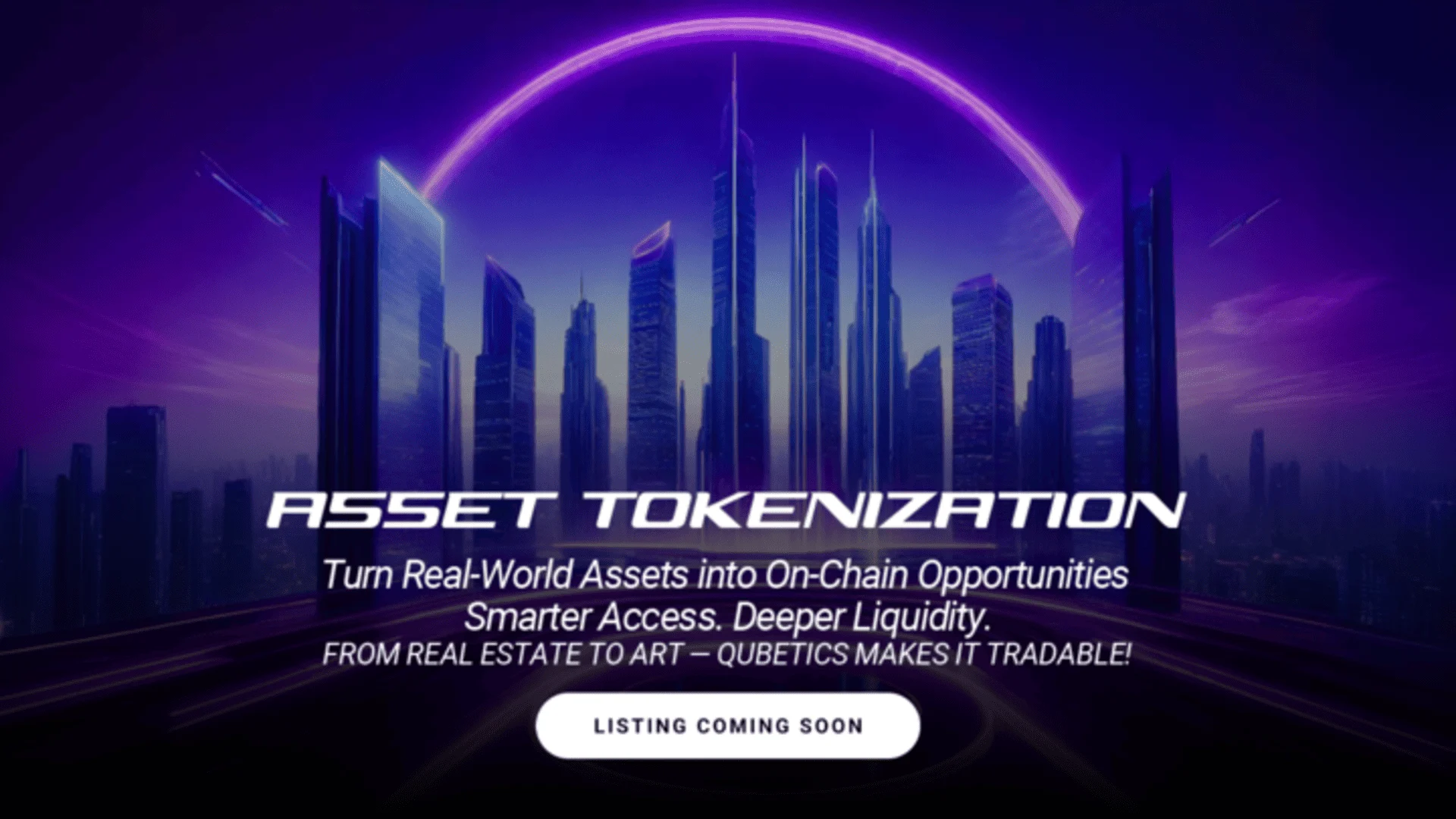Cardano Price Prediction 2026 And Qubetics: A Strategic Look at Future Value
0
0

Cardano (ADA), widely regarded as one of the most research-driven and scientifically grounded blockchain platforms, has displayed modest recovery in 2025 after a prolonged bearish cycle. As of June 2025, ADA is trading at approximately $0.43, consolidating after a correction that reflected broader market sentiment. Technical resistance is currently positioned near the $0.50 mark. If this level is breached with supporting volume, analysts predict that ADA may move towards the $0.60–$0.70 range in the coming months.
Forecast models suggest ADA may reach between $0.71 and $1.00 by mid-to-late 2026. While the token is unlikely to experience parabolic growth without significant macro catalysts, Cardano’s development pipeline—including Voltaire governance upgrades and on-chain staking incentives—adds structural support for gradual price appreciation. Should adoption and dApp activity increase, particularly through academic or governmental partnerships, ADA’s performance could surprise to the upside. Nonetheless, its trajectory remains highly sensitive to broader market trends, especially given its reputation as a “blue-chip” Layer 1 asset.
Technical Indicators and Governance Developments Signal Steady Growth
From a technical standpoint, Cardano has entered a consolidation range bounded by support at $0.38 and resistance at $0.50. The 50-day moving average sits just below current price levels, suggesting mild bullish momentum, while the 200-day moving average remains above, acting as dynamic resistance. A symmetrical triangle is forming on daily charts, typically interpreted as a neutral pattern with potential for breakout in either direction. The Relative Strength Index (RSI) holds near 52, indicating no strong momentum bias, and the MACD has shown early signs of bullish crossover.
On-chain, ADA benefits from substantial staking participation—over 60% of tokens remain staked—reflecting confidence in the network’s long-term vision. Meanwhile, the upcoming Voltaire upgrade aims to implement full on-chain governance, allowing ADA holders to vote on network proposals. This could significantly increase user engagement and investor sentiment, two factors that often correlate with upward price movement. If these enhancements are implemented efficiently, ADA may inch closer to the $1.50–$2.00 price band projected by long-term forecasts, though any such appreciation is likely to unfold gradually over multiple quarters.
Qubetics: Building Real-World Asset Infrastructure Beyond Layer 1 Hype
In contrast to Cardano’s evolutionary growth strategy, Qubetics represents a newer wave of crypto innovation focused on application-first utility—specifically, the real-world asset tokenisation marketplace. Rather than positioning itself as just another Layer 1 platform, Qubetics enables fractional ownership, trading, and settlement of real-world assets—such as real estate, commodities, and carbon credits—on-chain. Its smart contract infrastructure is designed to support legally compliant tokenised assets across multiple jurisdictions, bridging the gap between traditional finance and decentralised systems.
The key distinction lies in Qubetics’ integration-ready framework for institutional use. For example, a property investment fund in London can list tokenised shares of a physical asset on the Qubetics marketplace, allowing global retail and institutional participants to buy, sell, or trade ownership in real time. This democratises access to illiquid markets, reduces custodial friction, and accelerates settlement—a value proposition not fully addressed by platforms like Cardano, which remain focused on ecosystem development and academic rigour. For investors seeking tangible, on-chain applications tied to real assets, Qubetics presents a differentiated and highly scalable model.

The Qubetics Presale: A Value Entry Point for 2026-Oriented Investors
Qubetics is currently in crypto presale Stage 37, priced at $0.3370 per $TICS token, with over 516 million tokens sold and $18 million raised. More than 28,100 token holders have joined the project, drawn by its structured tokenomics and live application roadmap. The deflationary supply—reduced from 4 billion to 1.36 billion tokens—increases long-term scarcity, especially with only 10 million tokens remaining in this stage. The presale model rewards early entry, offering a lower-cost position ahead of Qubetics’ full marketplace launch in late 2025.
From an investment perspective, Qubetics offers a high-risk, high-reward opportunity. For instance, a $100 investment today secures 296 $TICS tokens. If the token reaches $1 after public launch, this portfolio grows to $296. If Qubetics follows a trajectory similar to Ethereum’s early years and climbs to $5 or beyond, that same investment scales to $1,480+, a return few post-ICO tokens have matched in recent years. These projections are grounded not only in hype but in the tangible utility Qubetics brings to asset ownership and cross-border finance—two segments currently underserved in the DeFi market.
ADA vs Qubetics: Diverging Strategies in a Converging Market
Comparing Cardano and Qubetics highlights a fundamental difference in blockchain strategy. Cardano represents a methodical, governance-heavy Layer 1 ecosystem that prioritises decentralisation, peer review, and security. It has established partnerships with African governments and strong academic institutions, earning its place in the upper tier of legacy crypto projects. Its outlook for 2026 is stable, promising moderate gains tied closely to market sentiment and governance efficiency.
Qubetics, on the other hand, takes a vertical-specific approach. Its marketplace is not designed to replace other Layer 1s but to sit atop them, connecting real-world value to blockchain infrastructure. It embraces interoperability and has immediate use cases in tokenised finance, an area expected to exceed $16 trillion by 2030, according to estimates by Boston Consulting Group. If adoption continues to accelerate, Qubetics may outperform legacy assets not because of speculative hype, but because it solves real problems across real-world systems.
Conclusion: Which Is Better Positioned for 2026—Qubetics or Cardano?
The answer depends on investment profile and time horizon. Cardano offers a more predictable, lower-volatility exposure to blockchain infrastructure. It is likely to benefit from long-term staking, governance upgrades, and gradual dApp development. For investors seeking relative safety within the crypto ecosystem, ADA remains a sound—if modest—choice.
However, for those pursuing early-stage innovation and higher upside, Qubetics offers the stronger asymmetric bet. Its presale performance, combined with its application in real-world asset tokenisation, positions it as a solution to pressing liquidity and accessibility challenges in global finance. With both projects serving different verticals, a balanced portfolio could reasonably include ADA for security and Qubetics for growth. Yet, if one is to ask which crypto aligns more directly with blockchain’s next stage of evolution, the evidence increasingly points to Qubetics.
For More Information:
Qubetics: https://qubetics.com/
Presale: https://buy.qubetics.com/
Telegram: https://t.me/qubetics/
Twitter: https://x.com/qubetics/
This article is not intended as financial advice. Educational purposes only.
0
0
 Manage all your crypto, NFT and DeFi from one place
Manage all your crypto, NFT and DeFi from one placeSecurely connect the portfolio you’re using to start.






